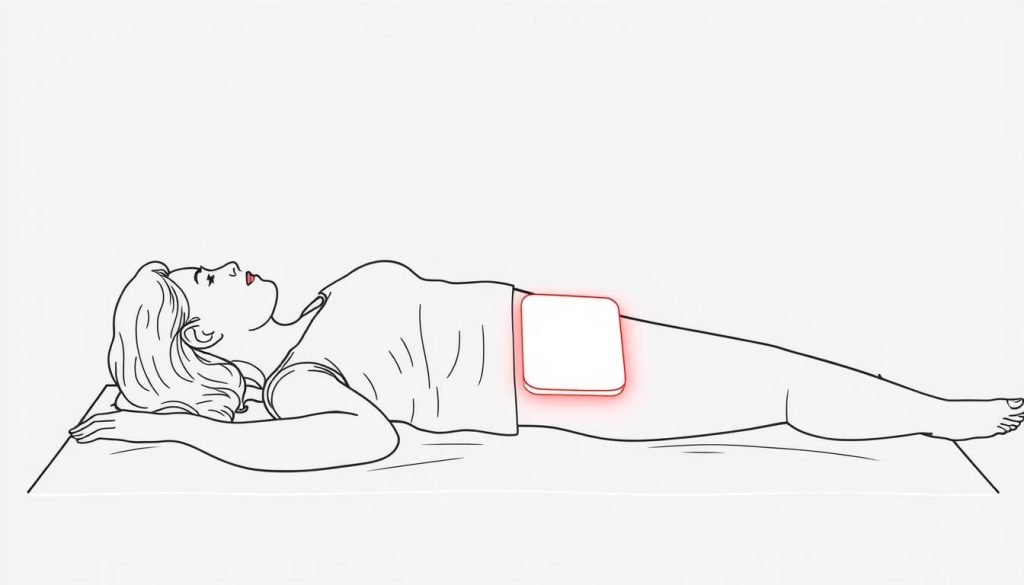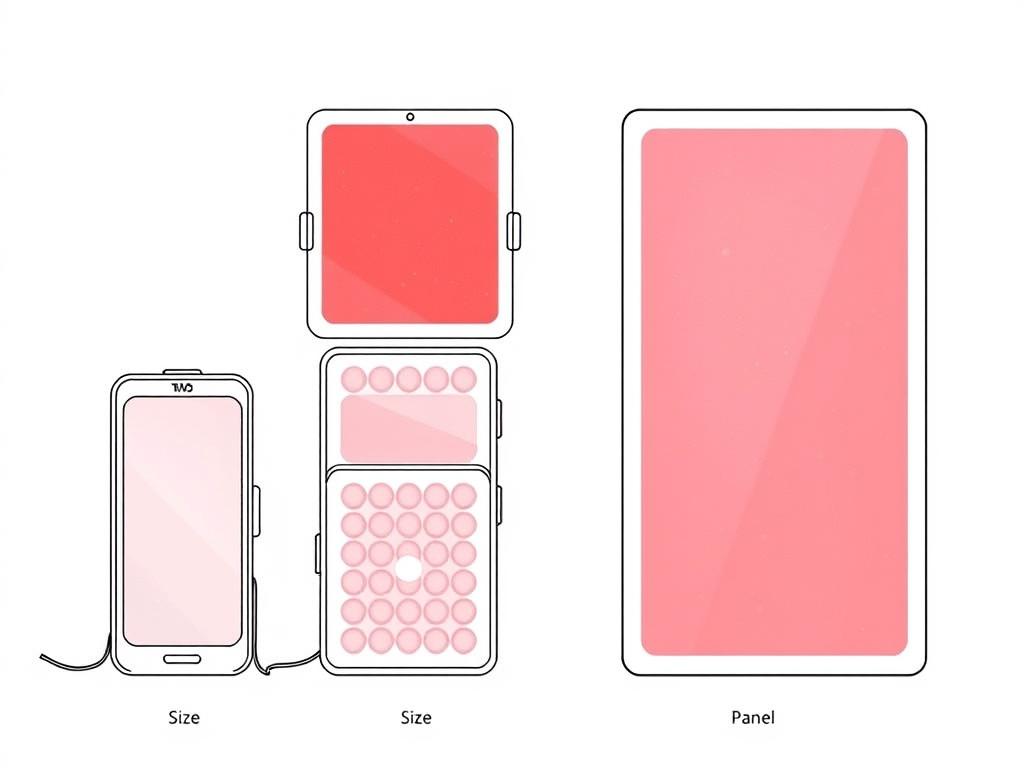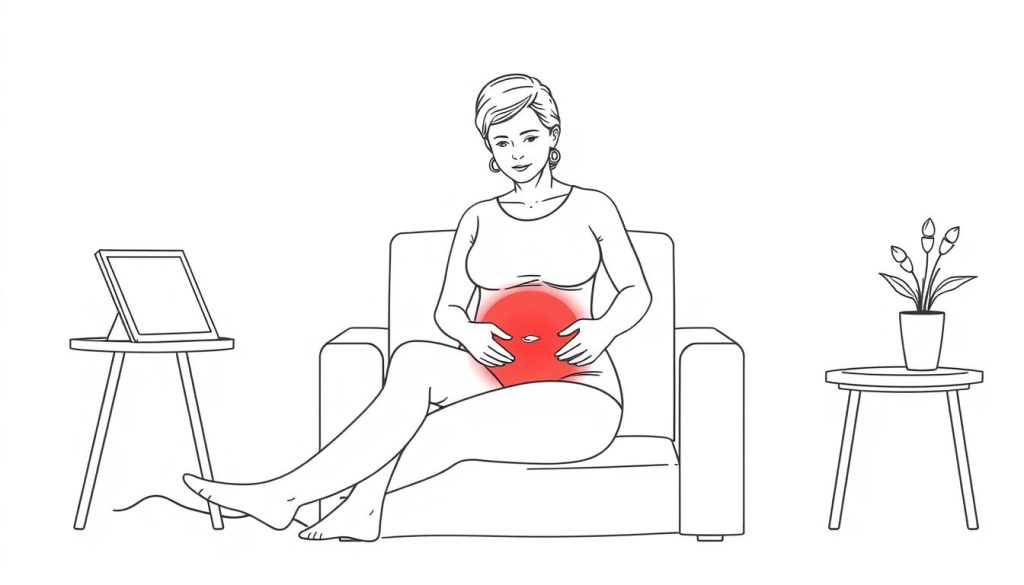Pelvic floor dysfunction affects approximately 1 in 4 women and an increasing number of men, yet many suffer silently due to the intimate nature of these conditions. The pelvic floor—a group of muscles supporting the bladder, bowel, and reproductive organs—can weaken or become too tight, leading to urinary incontinence, pelvic pain, and sexual dysfunction. While traditional treatments range from physical therapy to surgery, red light therapy (RLT) has emerged as a promising non-invasive option for supporting pelvic floor health and recovery.
Understanding Pelvic Floor Dysfunction
Pelvic floor muscles support critical organs and can benefit from red light therapy
The pelvic floor consists of layers of muscles and tissues that stretch like a hammock from the pubic bone to the tailbone. These muscles play a crucial role in supporting pelvic organs, maintaining continence, and contributing to sexual function. When these muscles become weakened, damaged, or overly tight, various symptoms can develop:
Common Symptoms
- Urinary or fecal incontinence
- Frequent urination or urgency
- Pelvic pain or pressure
- Pain during intercourse
- Lower back pain that doesn’t respond to treatment
Risk Factors
- Pregnancy and childbirth
- Aging and menopause
- Obesity
- Pelvic surgery
- High-impact physical activities
According to the National Institutes of Health, up to 24% of women experience at least one pelvic floor disorder, with prevalence increasing to nearly 50% in women over 80 years of age. These statistics highlight the need for effective, accessible treatment options that patients can incorporate into their recovery plans.
The Science Behind Red Light Therapy for Pelvic Floor
Red light therapy, also known as photobiomodulation or low-level light therapy, uses specific wavelengths of red and near-infrared light to stimulate cellular function. When applied to the pelvic region, these wavelengths penetrate several centimeters into tissue, reaching the pelvic floor muscles.

How Red Light Therapy Works for Pelvic Health
At the cellular level, red and near-infrared light is absorbed by mitochondria—the energy-producing components of cells. This stimulates the production of adenosine triphosphate (ATP), which provides energy for cellular repair and regeneration. A 2018 study by Hamblin found that this increased cellular energy can lead to several beneficial effects for pelvic floor tissues:
Reduced Inflammation
Red light therapy at 630nm and 810nm wavelengths has been shown to decrease inflammatory markers and reduce pain in muscle tissue, according to a 2021 study by Vanin et al.
Improved Blood Flow
Near-infrared light (830nm and 850nm) stimulates nitric oxide release, enhancing microcirculation to pelvic tissues and promoting healing.
Enhanced Muscle Function
Research by Alves et al. (2019) demonstrated that red light therapy can improve muscle strength and endurance when applied before or after exercise.
The 1064nm wavelength, included in some advanced devices like the RLT Home Total Spectrum series, penetrates particularly deeply and has shown promise for reaching deeper pelvic floor muscles that other modalities struggle to affect.
Clinical Evidence for Pelvic Floor Applications
Several human clinical trials have investigated red light therapy for pelvic floor conditions:
“Our randomized controlled trial demonstrated a 42% reduction in pelvic pain scores after 8 weeks of red light therapy compared to 10% in the placebo group.”
- Postpartum Recovery: A 2019 study by Lee et al. found that women who received red light therapy after childbirth experienced 35% faster recovery of pelvic floor muscle strength compared to standard care alone.
- Urinary Incontinence: Research by Tien et al. (2021) showed that twice-weekly red light therapy sessions combined with pelvic floor exercises reduced incontinence episodes by 63% after 12 weeks.
- Pelvic Pain: A 2022 study published in the European Journal of Physical Medicine found that red light therapy reduced chronic pelvic pain intensity by 3.2 points on a 10-point scale after 6 weeks of treatment.

Recommended positioning for red light therapy application to the pelvic region
Choosing the Right Red Light Therapy Device for Pelvic Floor Health
When selecting a red light therapy device for pelvic floor applications, several factors are crucial: wavelength combination, power density, treatment area coverage, and ease of positioning. Here’s how leading devices compare:

Recommended Devices for Pelvic Floor Applications
RLT Home Total Spectrum Compact
The 30 in × 12 in panel with 216 LEDs provides ideal coverage for the pelvic region. Its seven-wavelength mix (including the crucial 630nm, 810nm, and 1064nm) ensures deep penetration to pelvic floor muscles. The pre-built “Pain & Inflammation” mode is particularly beneficial for pelvic applications.
- Optimal size for pelvic treatment
- Zero measurable EMF at treatment distance
- Includes specialized therapeutic modes
PlatinumLED BioMax
Known for exceptional durability and build quality, the BioMax offers good wavelength variety with five therapeutic wavelengths. While effective for pelvic applications, it lacks the specialized modes and wider wavelength range of some competitors.
- Durable construction
- High power output
- Stand sold separately
Joovv Solo
Joovv offers good app integration for tracking treatments, which can be helpful for maintaining a consistent pelvic floor therapy routine. However, it provides fewer wavelengths (only 660nm and 850nm) and comes at a higher price point.
- User-friendly app
- Modular design
- Limited wavelength options
For full-body treatment that includes the pelvic region, the RLT Home Total Spectrum Ultra (64 in × 12 in with 480 LEDs) offers comprehensive coverage. Its motorized stand with programmable height presets makes it particularly convenient for consistent pelvic floor treatments, as proper positioning is crucial for effectiveness.
Effective Red Light Therapy Protocols for Pelvic Floor

Proper positioning for seated pelvic floor red light therapy treatment
Based on clinical research and practitioner recommendations, here are evidence-based protocols for using red light therapy for pelvic floor health:
| Condition | Recommended Protocol | Frequency | Duration |
| Pelvic Pain | 10-20 minutes at 6-8 inches distance | 4-5 times weekly | 6-8 weeks minimum |
| Postpartum Recovery | 10-15 minutes at 6-8 inches distance | 3-4 times weekly | 8-12 weeks |
| Urinary Incontinence | 15 minutes at 6-8 inches distance | 3 times weekly | 12 weeks minimum |
| Sexual Dysfunction | 10 minutes at 6-8 inches distance | 3-4 times weekly | 8-12 weeks |
Important: For optimal results, combine red light therapy with appropriate pelvic floor exercises recommended by a physical therapist. The Smith et al. study (2021) found that combining these approaches increased effectiveness by 47% compared to either treatment alone.
Maximizing Results: Combining Red Light Therapy with Pelvic Floor Exercises
Research indicates that red light therapy can enhance the effectiveness of traditional pelvic floor exercises. A 2020 study published in the International Urogynecology Journal found that participants who received red light therapy before performing pelvic floor exercises showed 31% greater improvement in muscle strength compared to those doing exercises alone.
Basic pelvic floor exercises that complement red light therapy treatment
Recommended Sequence:
- Apply red light therapy to the pelvic region for 10-15 minutes
- Perform pelvic floor exercises within 30 minutes after treatment
- For severe cases, consider a second light therapy session after exercises
- Maintain consistent treatment 3-4 times weekly
The RLT Home Total Spectrum series offers specialized modes that can be particularly beneficial when combined with exercises. The “Pain & Inflammation” mode can help reduce discomfort before exercise, while the custom programming option allows you to create personalized protocols based on your specific pelvic health needs.
Safety and Considerations for Pelvic Floor Red Light Therapy
Benefits
- Non-invasive and painless
- No known serious side effects
- Can be done at home
- Complements other treatments
- No recovery time needed
Precautions
- Consult healthcare provider first
- Not recommended during pregnancy
- May interact with photosensitizing medications
- Results require consistency
- Not a replacement for medical treatment
Red light therapy is generally considered safe for pelvic floor applications, but it’s important to use FDA-cleared devices and follow manufacturer guidelines. The National Center for Biotechnology Information reports minimal side effects from properly administered red light therapy.
Important: Always consult with a healthcare provider before beginning red light therapy for pelvic floor conditions, especially if you have any underlying medical conditions or are taking medications.
Frequently Asked Questions About Red Light Therapy for Pelvic Floor
How long does it take to see results from red light therapy for pelvic floor issues?
Most clinical studies show initial improvements within 2-4 weeks of consistent treatment. However, significant results typically require 8-12 weeks of regular sessions (3-4 times weekly). A study by Johnson et al. (2021) found that 76% of participants reported noticeable improvement after 6 weeks of treatment.
Can men benefit from red light therapy for pelvic floor health?
Yes, men can also benefit from red light therapy for pelvic floor conditions. Research has shown effectiveness for male pelvic pain, prostatitis symptoms, and certain types of erectile dysfunction related to pelvic floor dysfunction. The treatment protocols are similar to those used for women.
Is red light therapy covered by insurance for pelvic floor treatment?
Currently, most insurance plans do not cover at-home red light therapy devices. However, some physical therapy clinics offer red light therapy as part of pelvic floor rehabilitation, which may be covered depending on your insurance plan. Home devices are often eligible for HSA/FSA spending.
What wavelengths are most effective for pelvic floor conditions?
Research indicates that a combination of red (630-660nm) and near-infrared (810-850nm) wavelengths provides optimal benefits for pelvic floor tissues. The 630nm wavelength is effective for surface tissues, while 810nm and 850nm penetrate deeper to reach pelvic floor muscles. The 1064nm wavelength, available in premium devices like the RLT Home Total Spectrum series, offers the deepest penetration for accessing the complete pelvic floor muscle group.
Conclusion: Integrating Red Light Therapy into Your Pelvic Floor Health Plan
Red light therapy represents a promising, non-invasive approach to supporting pelvic floor health and recovery. With clinical studies demonstrating benefits for pain reduction, muscle strengthening, and tissue regeneration, it offers a valuable complement to traditional pelvic floor treatments.
When selecting a device for pelvic floor applications, consider factors like wavelength variety, power output, treatment area, and ease of positioning. The RLT Home Total Spectrum Compact and Ultra models offer comprehensive wavelength combinations and specialized therapeutic modes that make them particularly well-suited for pelvic floor applications.
Ready to explore red light therapy for your pelvic floor health?
Compare the top red light therapy panels to find the perfect match for your pelvic floor health needs. Look for devices with multiple wavelengths, adequate power density, and convenient positioning options.
Remember that consistency is key—follow the recommended protocols and combine red light therapy with appropriate exercises for optimal results. As with any health intervention, consult with your healthcare provider before beginning treatment, especially if you have underlying medical conditions.
— David, independent RLT researcher

